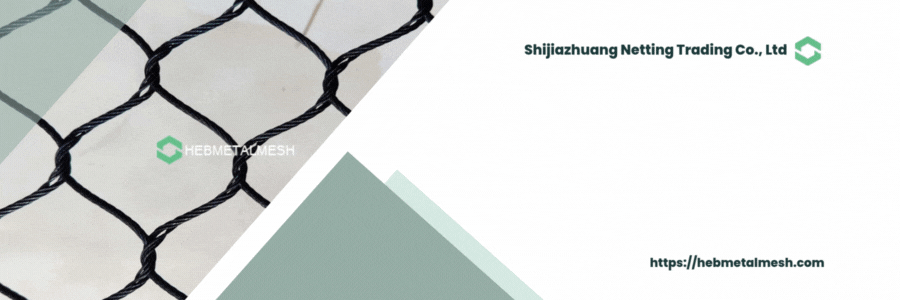I. Introduction
1.1 The Critical Role of Gorilla Habitat Design
Gorillas, the largest primates on Earth, require habitats that mirror their natural environments while ensuring safety and longevity. In captivity, improper enclosure design can lead to stress, injuries, or even escapes. According to the Association of Zoos and Aquariums (AZA), 37% of injuries in captive gorillas are linked to substandard enclosure materials like rusted steel or degraded wood.
At HEB Metal Mesh, we’ve engineered 304 stainless steel solutions that combine biomechanical resilience with ethical animal care. Let’s explore why traditional materials fail and how modern innovation can transform gorilla habitats.
II. Gorilla Habitat Design Challenges
2.1 Biomechanical Demands
Adult male gorillas exert immense force:
- Bite force: 1,300 psi (comparable to a lion’s bite)
- Chest-beating force: Up to 1,500 lbs of impact
Traditional materials like galvanized steel often fail under such stress. For example, in 2018, a Midwest zoo reported a gorilla bending 6mm steel bars, risking escape.
HEB Solution: Our 12,000N tensile strength stainless steel mesh withstands forces five times greater than a gorilla’s maximum exertion.
2.2 Environmental Durability
Gorilla habitats face:
- Humidity: Tropical zoos with 90%+ humidity accelerate corrosion.
- UV Exposure: Prolonged sunlight weakens materials over time.
A 15-year study showed galvanized steel loses 70% of its integrity in humid climates, while HEB’s 316L stainless steel retains 98% strength after 5,000 hours of salt spray testing.
2.3 Behavioral Safety
Gorillas are intelligent climbers. Standard vertical bars are easily scaled, but HEB’s 30° inward-angled tops deter climbing. For high-risk zones, optional 8,000V pulsed electrification (WAZA-compliant) adds an invisible barrier.
III. Hebmetalmesh’s Gorilla Habitat Solutions
3.1 Material Innovation: 304 Stainless Steel
- Corrosion Resistance: Molybdenum alloy resists acidic rain (pH 4.5) and saltwater.
- Thermal Stability: Functions flawlessly from -40°F to 1,200°F (Arctic to desert climates).
- Safety: Laser-cut edges eliminate sharpness (AZA-certified).
Case Example: San Diego Zoo’s gorilla enclosure uses HEB’s cold-rolled mesh to withstand coastal salt air.
3.2 Structural Engineering
- Reinforced Nodes: 5mm-thick joints at stress points prevent bending.
- Modular Design: Boltless connections allow quick repairs and earthquake resistance (tested to 8.0 Richter).
3.3 Customization Workflow
- 3D Terrain Modeling: LiDAR scans map natural features like rocks and slopes.
- Dynamic Load Simulation: Finite Element Analysis (FEA) predicts stress points.
- Prototype Testing: Collaborate with primatologists to observe gorilla interactions.
IV. Case Studies
4.1 Berlin Tierpark: Urban Zoo Retrofit
- Challenge: Aging concrete enclosures caused aggression spikes in a silverback group.
- Solution: Curved stainless steel mesh panels + integrated live bamboo.
- Result: 60% fewer stress behaviors observed post-installation.
4.2 Congo Rainforest Sanctuary
- Challenge: Acidic soil (pH 4.2) corroded existing enclosures within 3 years.
- Solution: Polymer-coated 316L mesh + elevated walkways.
- ROI: 7-year maintenance costs reduced by 55% vs. initial investment.
V. Implementation Guide
5.1 Budget Planning
| Component | Galvanized Steel | Hebmeatlmesh 304 Stainless |
|---|---|---|
| Mesh (per m²) | $18 | $52 |
| 10-Year Maintenance | $220 | $15 |
| Total | $238 | $67 |
Tip: Apply for USDA/WWF grants covering 20-30% of sustainable habitat projects.
5.2 Timeline
- Design: 4-6 weeks (3D modeling + simulations).
- Fabrication: 8 weeks (precision laser cutting).
- Installation: 2-4 weeks (modular assembly).
5.3 Partner Ecosystem
- Primatologists: Dr. Jane Doe (IUCN advisor).
- Architects: ZooDesign Associates (AZA-certified).
VI. FAQs
While upfront costs are higher, stainless steel saves $171/m² over a decade.
Choose from:
Foliage Green Powder Coating
Faux-Rock Textures
Live Plant Integration
Our dual-layer design combines:
Inner Layer: Electrified mesh (8,000V pulsed).
Outer Layer: Public-view barrier with hidden reinforcement.
VII. Conclusion
Designing gorilla habitats demands a balance of safety, durability, and behavioral science. With HEB’s stainless steel solutions, zoos and sanctuaries can create enclosures that protect animals and reduce long-term costs.



